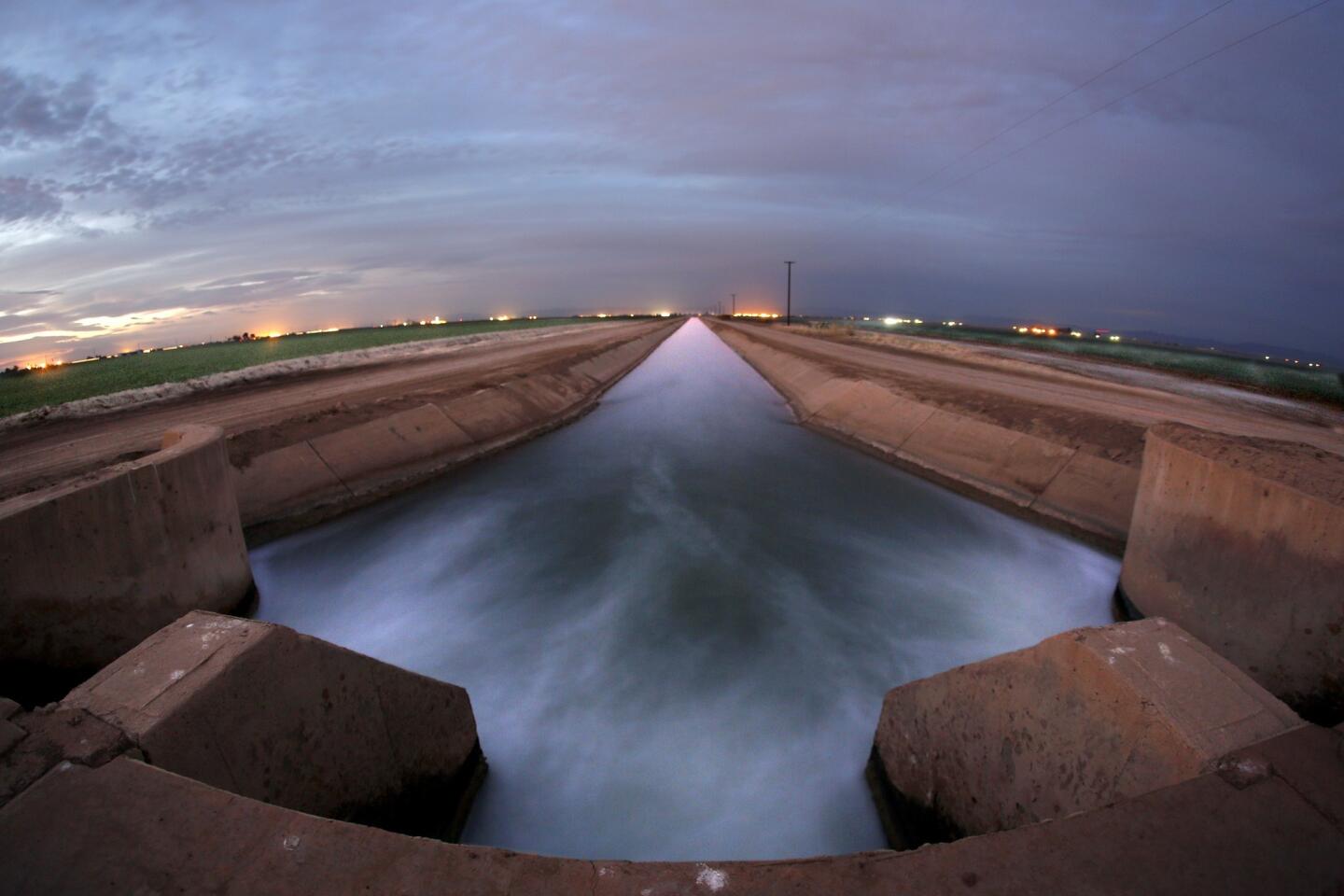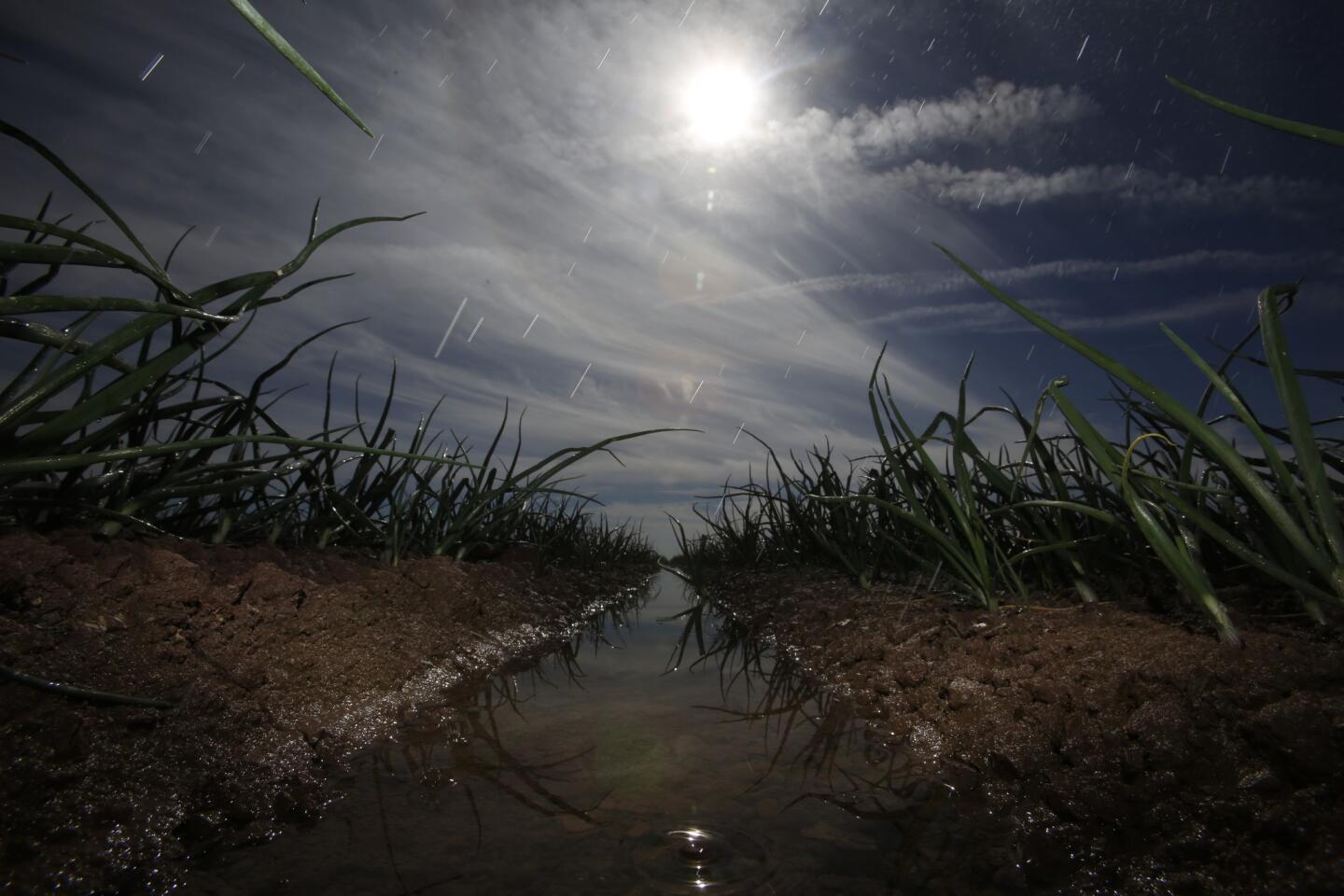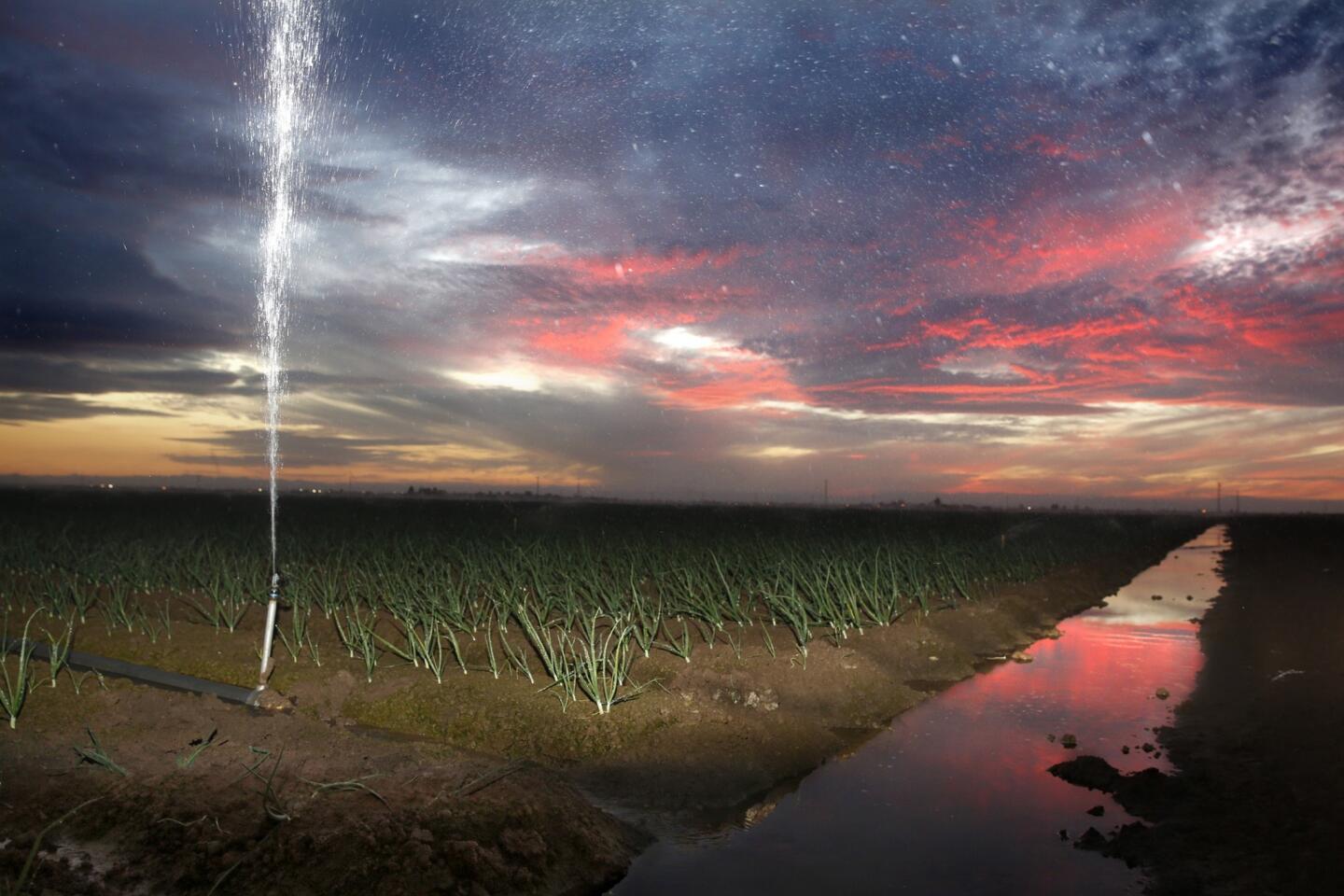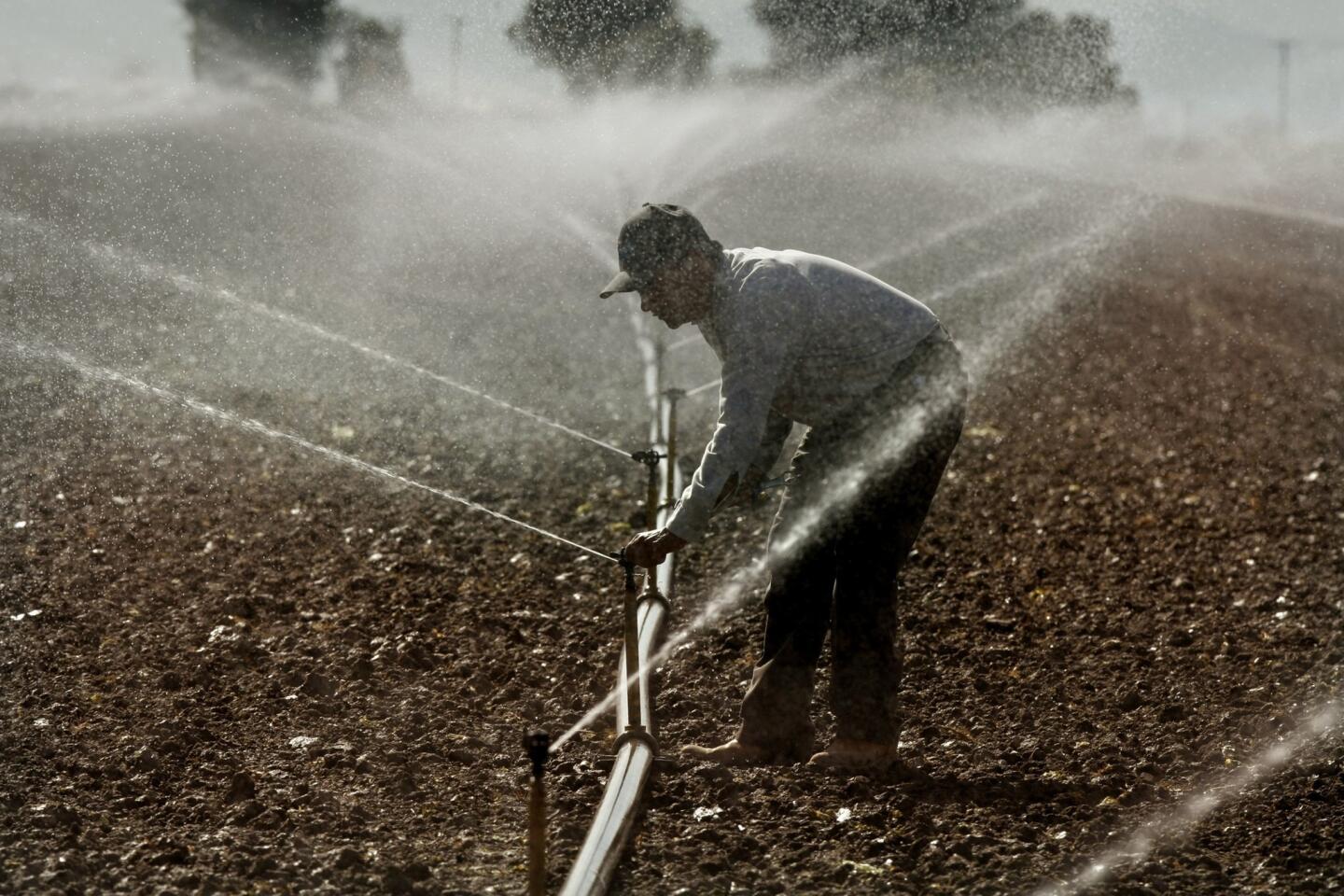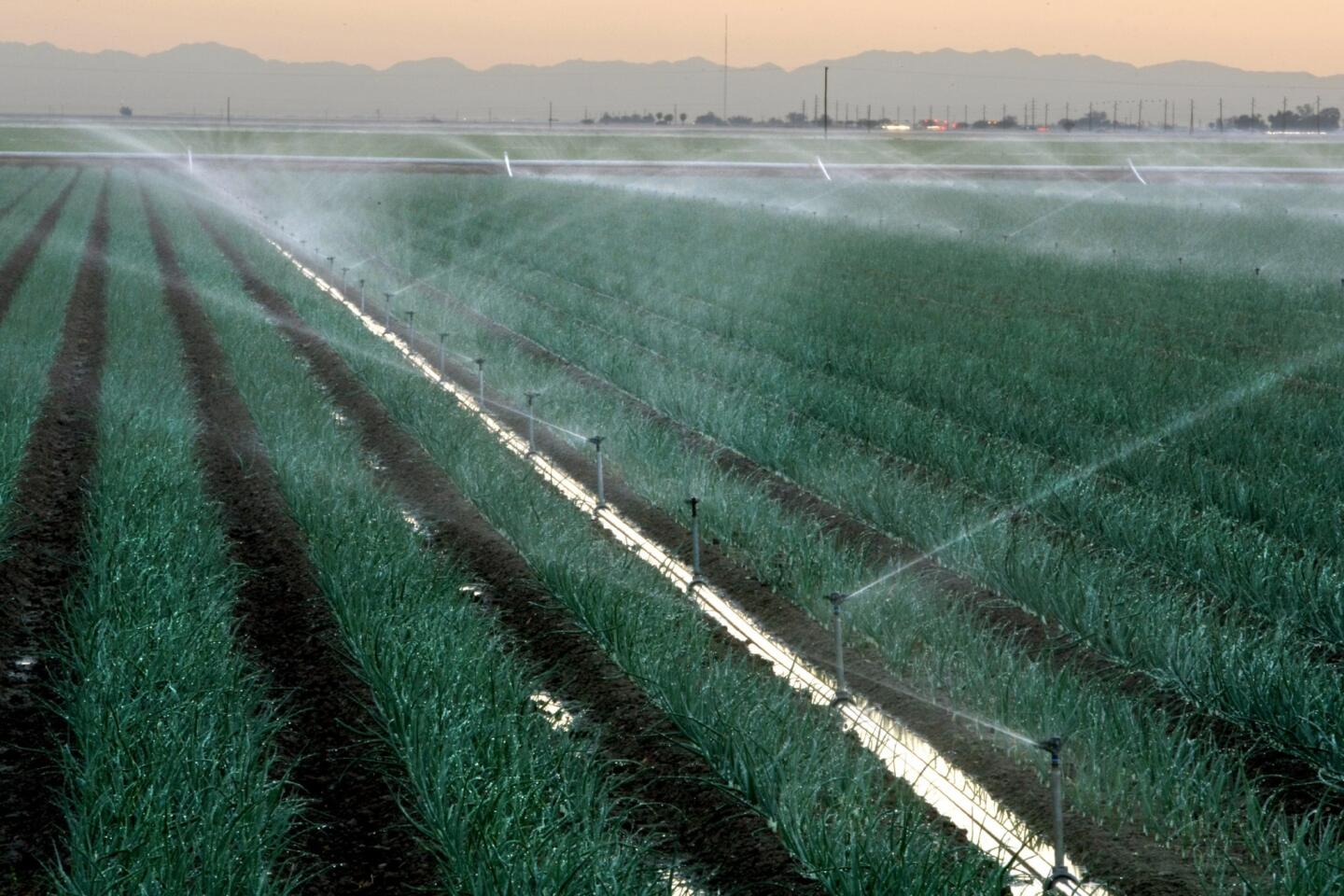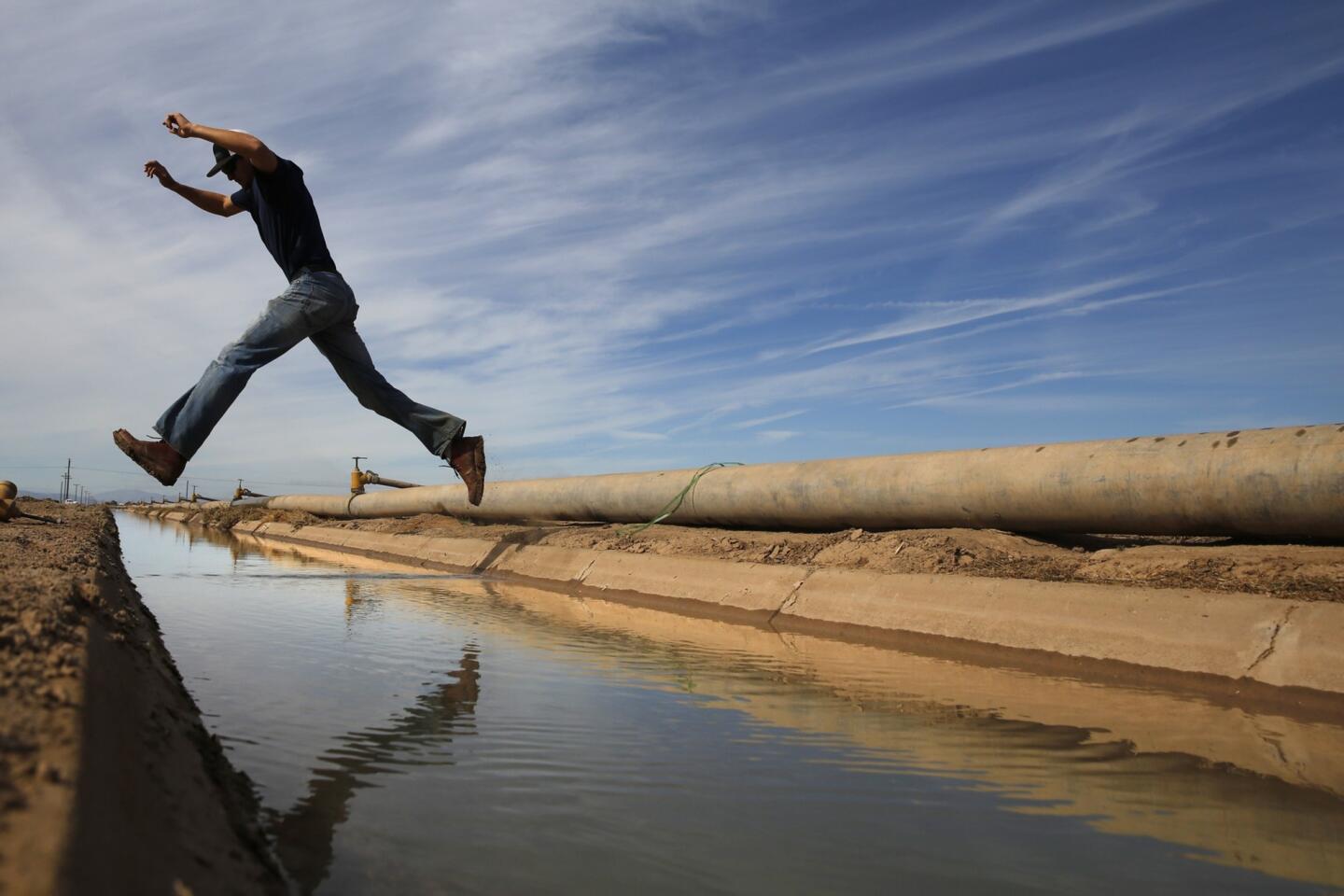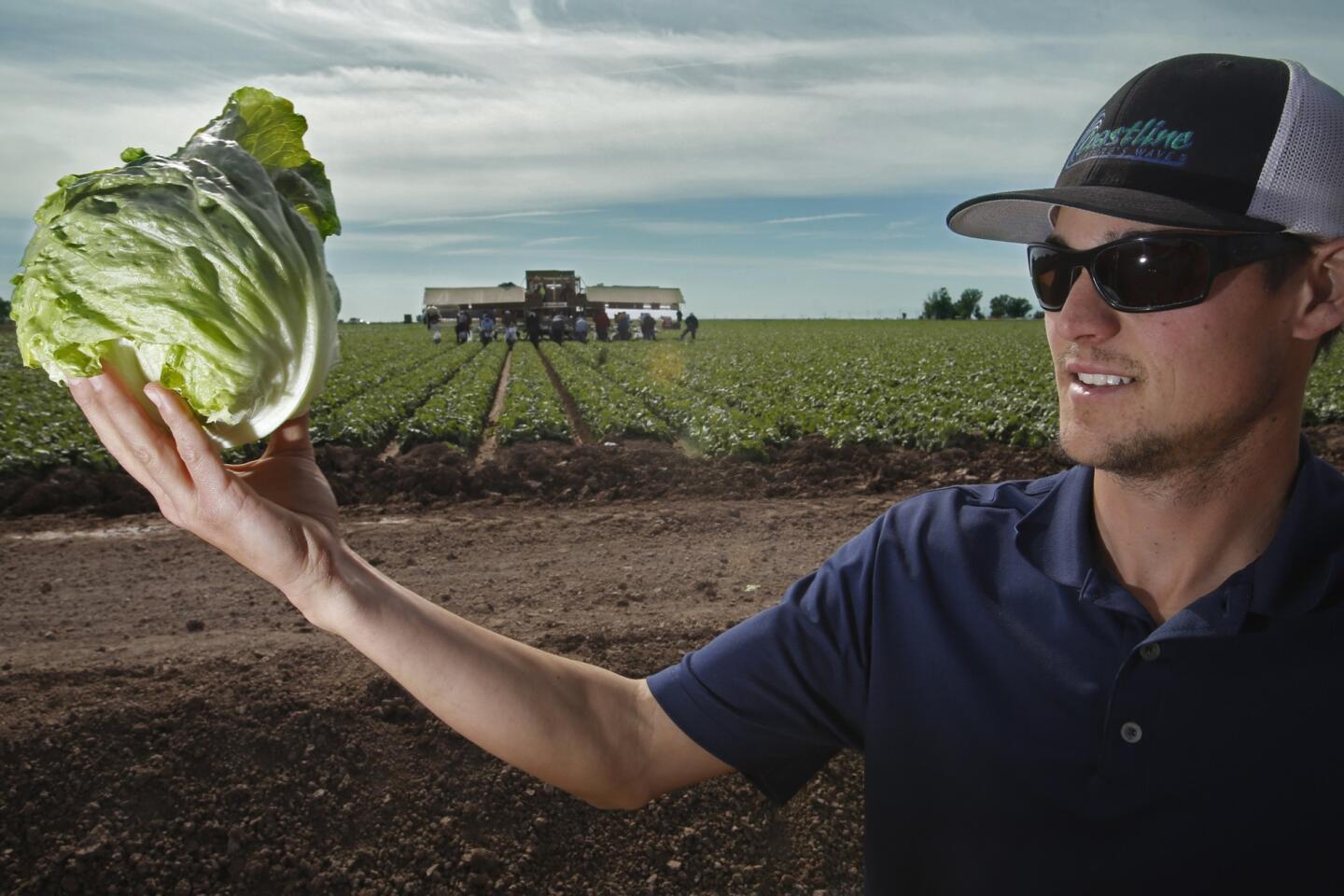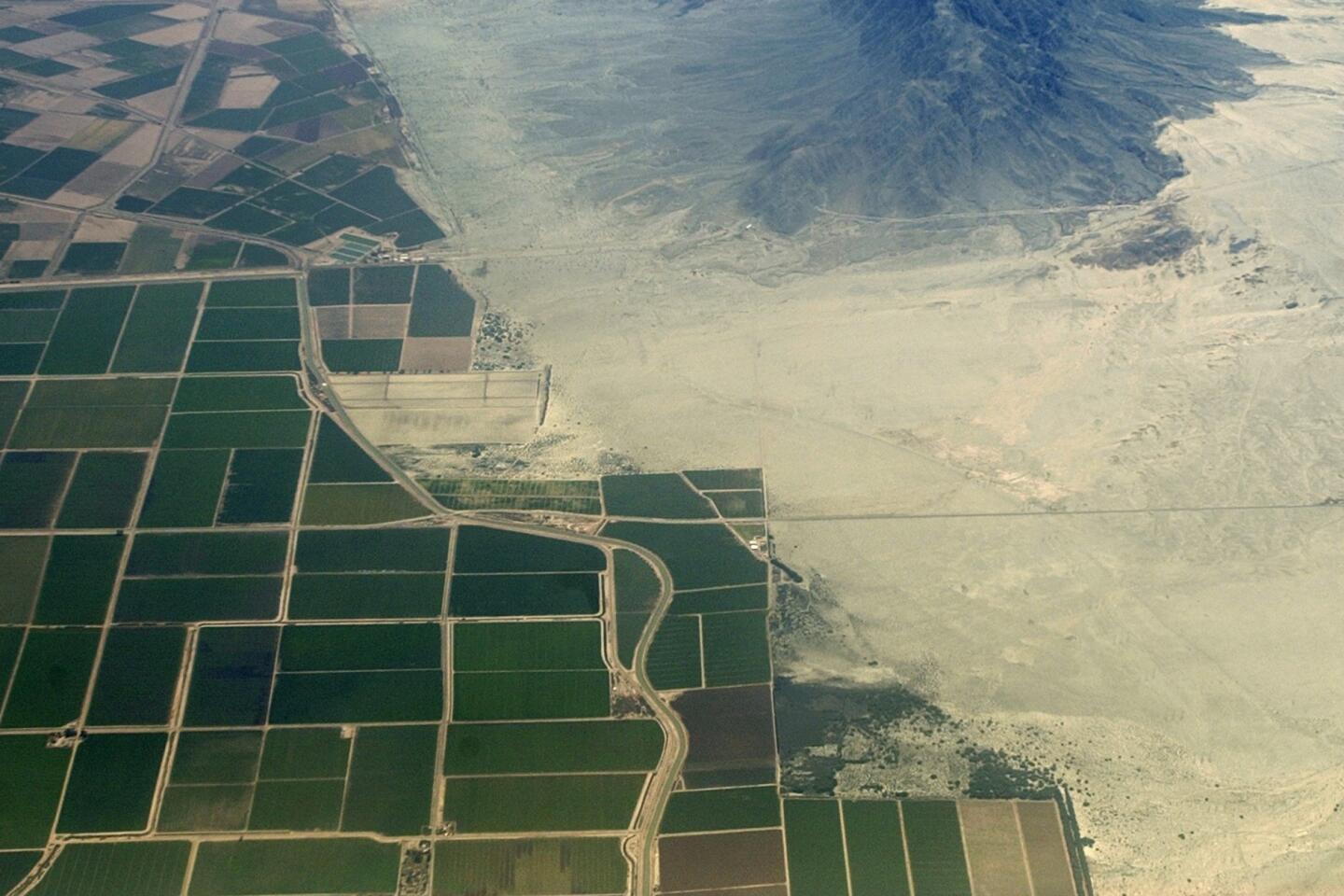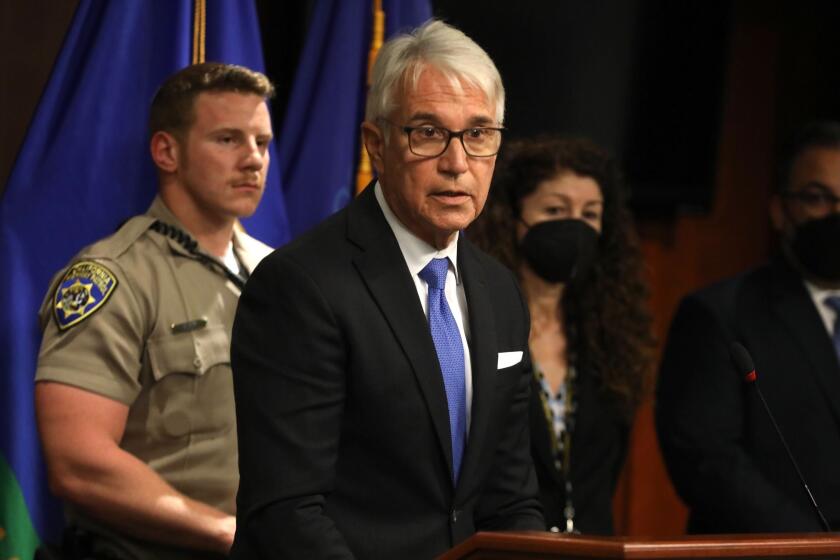For Imperial Valley farmers, abundant water amid drought
- Share via
BRAWLEY, Calif. — Thomas Cox, a third-generation Imperial Valley farmer, is driving his pickup along the gravel roads that separate large fields of lettuce, broccoli, onions and wheat.
The discussion turns, as it often does in the Imperial Valley, to water. “Without water,” said Cox, 27, “our ground would be useless.”
But with copious amounts of water, the Cox family and others have turned half a million acres of desert into one of the most bountiful farming regions in the world — a fact unchanged by the drought gripping much of California.
FOR THE RECORD:
Imperial Valley water: An article in the March 17 Section A about water rights in the Imperial Valley referred to a local farmer and poet as “the late” Rick Mealey. Mealey, in his late 70s, is alive and living in the area. The error also appeared in a Nov. 27, 2012, article about the All-American Canal in the valley. —
While other areas — including the farm belt of the Central Valley — face immediate supply cutbacks, the Imperial Valley continues to have all the water it can use.
The valley is not connected to the State Water Project, which delivers water from Northern California. Its water comes directly from the Colorado River, which has continued allocations.
The valley’s share is ensured by agreements among the seven states that depend on the river, starting with the 1922 Colorado River Compact.
In water law, one rule is supreme: “First in time, first in right.”
As a result, Imperial County, with a population of 175,000, gets 3.1 million acre-feet of water a year. The Metropolitan Water District of Southern California, serving 19 million people, gets about 1.1 million acre-feet.
More than a century ago, the pioneer farmers of the Imperial Valley — many of them immigrants from Asia and Europe attracted by cheap land — braved blistering summer temperatures and barren ground. Through grit and ingenuity, they pulled water from the Colorado River years before the thirsty communities of coastal California looked eastward.
The drought is largely a rumor here, but one with ominous overtones: that outside forces with political clout might try to force the valley to sell some of its water, as was done a decade ago, or even try to take a portion.
“We recognize we live in an area that is blessed to have strong, senior rights on the Colorado River,” said Linsey Dale, executive director of the county Farm Bureau. “We are aware that other areas are desperate for the water we have.”
Gov. Jerry Brown’s call for conservation has not prompted much official action here, but it has been much discussed.
“Obviously it makes us rally around our water rights more than usual,” said Tina Anderholt Shields, Colorado River resources manager for the Imperial Irrigation District.
Even if the federal agency that manages the Colorado River is forced to impose drought rules already adopted by the seven states, Arizona and Nevada would see their allocations cut before any reduction would be imposed on the Imperial Irrigation District.
Farming is the foundation of the valley’s economy. Only 3% of the valley’s water allocation is for residential use.
A decade ago, under pressure from state and federal officials, the Imperial Irrigation District agreed to the nation’s largest sale of water from farms to cities. If the district did not sign the contract with the San Diego County Water Authority, the federal government had threatened to take the water without compensation.
The sale continues to be controversial in the Imperial Valley, the topic of hard-fought elections to the irrigation district board. The current board says it is not interested in selling more water.
To reduce water usage for the San Diego sale, farmers are paid to leave about 40,000 acres a year fallow. The Cox family, which farms about 3,300 acres, thinks of fallowing as a four-letter word.
“Fallowing is bad for our economy,” said Larry Cox, Thomas’ father. “It’s bad for farmland, bad for farming operations, bad for companies that depend on farming. And it’s very disruptive between the landlord and the farmer.”
As the drought tightens its grip on the rest of the state, the Imperial Irrigation District “has been very vocal: We are not in the water transfer business,” Shields said.
Still, the strength of the valley’s entitlement to the Colorado River is open to debate — although that debate would be lengthy, detailed and passionate.
The “first in time, first in right” statute comes from a long-ago time when the U.S. needed to encourage farming in dry areas to feed a rapidly growing population, said David Hayes, who was deputy Interior secretary in the Clinton and Obama administrations and is now a visiting lecturer at Stanford Law School.
“It seems a little out of step with today, but there it is,” Hayes said.
But water law also requires the Imperial Valley to employ water for “reasonable and beneficial use.” Into that discussion can come competing claims about methods of irrigation and the advisability of planting “thirsty crops.”
It was the “reasonable and beneficial use” standard that allowed then-Interior Secretary Bruce Babbitt to begin the years-long negotiation that led to a 40-year agreement signed in 2003 for the Imperial Irrigation District to sell water to San Diego.
Though Hayes does not see additional transfer of Imperial Valley water as part of the state’s short-term response to the drought, he predicts “more and more scrutiny of how water is being used by all water users.”
The fear of losing its share of the Colorado River is part of the region’s civic DNA. Some of the earliest farmers moved here from the Owens Valley after its water was sold to Los Angeles.
The late Rick Mealey, a farmer and unofficial poet laureate of the Imperial Valley, warned in verse about “these great big people” who decided that the Imperial Valley’s water “wasn’t ours/And they needed it all somewhere else/For amusement parks and power.”
A recent editorial in the Imperial Valley Press noted that the valley “often feels precarious for the historical target of water grabs and outside criticism over how we use our water allotment.… Unfortunately, Imperial County will always feel like the other shoe is going to drop (and splash).”
Thomas Cox’s late grandfather, Don Cox, was a member of the irrigation district board. He was among those who fought to the U.S. Supreme Court to protect the valley’s water rights.
Larry Cox, Thomas’ father, is a major figure in farm policy and politics in the valley. Thomas’ brother, Travis, 25, also works in the family farming operation.
Thomas Cox began working on the farm at age 7, pulling weeds from the irrigation ditches. By 13, he was driving tractors. He worked on the farm every summer during college at Cal State Fresno, except for two summers when he was a fly-fishing guide in Sun Valley, Idaho.
He met his wife during an internship at a produce sales company in Salinas, Calif. It was in Salinas where he realized “that office work is not my cup of tea.”
He enjoys driving from field to field with his father’s dogs, Labradors named Spooner and Abby, in the bed of the truck. He checks on the canals and speaks in fluent Spanish with the irrigation foreman, an employee of the Cox family for more than 20 years.
“I’m in charge of putting every drop onto our fields,” Rafael Velasquez said in Spanish. “Sometimes I work days and nights because the water must never stop.”
For Thomas Cox, the politics of water and the pressure of shifting market forces drift away when he is in the fields.
His favorite crop is cantaloupes, which require a delicate touch of timing and irrigation and the use of honey bees to pollinate the plants.
Gazing at a cantaloupe field, Cox said it gives him a Zen-like joy that he once enjoyed only when fly-fishing: “It’s just you and the crop, and the water.”
More to Read
Sign up for Essential California
The most important California stories and recommendations in your inbox every morning.
You may occasionally receive promotional content from the Los Angeles Times.
